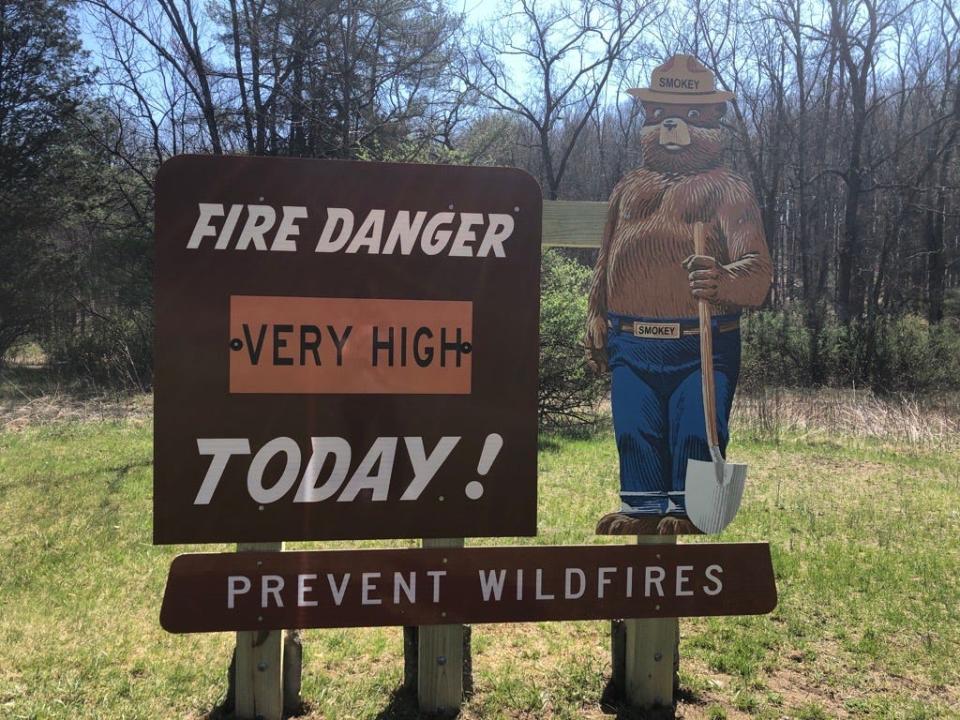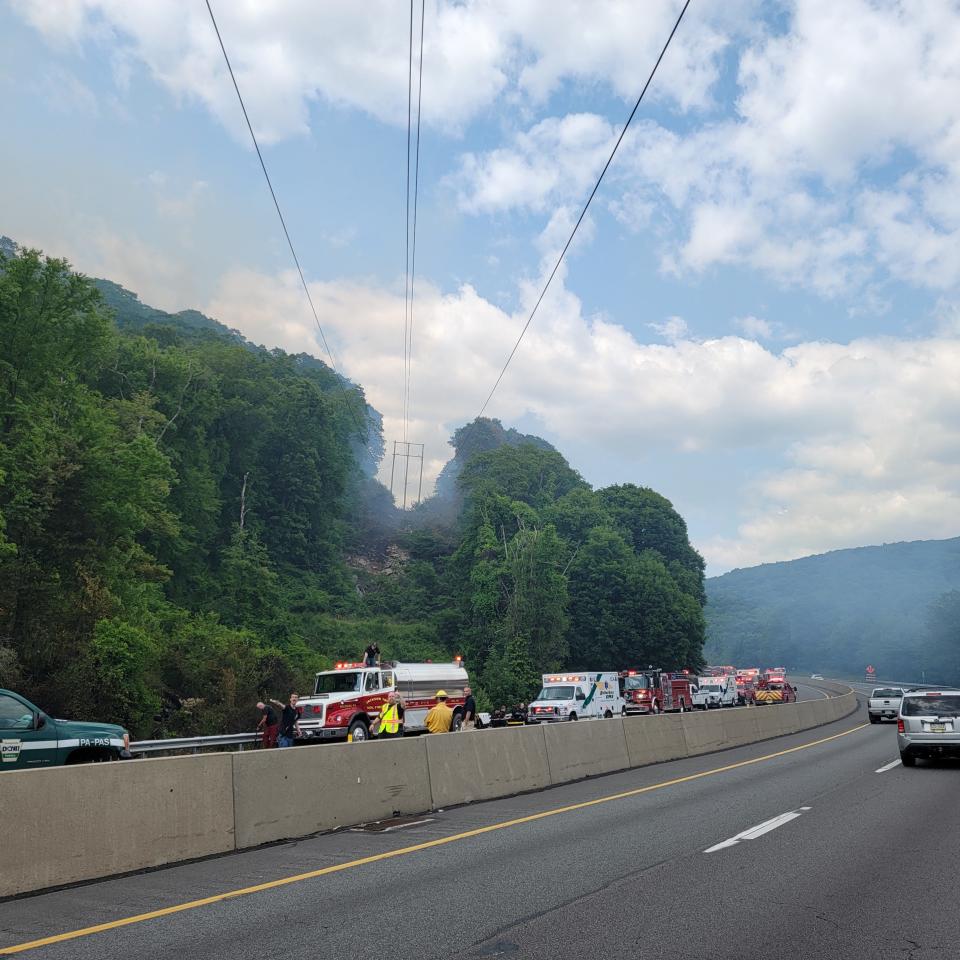Dry weather in Poconos raises fire risk, affects farmers
After an especially dry May, northeastern Pennsylvania is at an increased wildfire risk, Delaware River reservoirs are low and farmers face a challenging season.
Mount Pocono had the driest May on record with just three-quarters of an inch of rain, according to meteorologist and Pocono weather expert Ben Gelber. Stroudsburg had its fourth-driest May with .95 inches.
“The primary reason for moisture being deflected away from Pennsylvania, with notably dry midsummer and winter patterns in recent years, is a rare ‘triple dip’ La Niña, an oceanic climate system featuring persistent cooler-than-normal water in the eastern tropical Pacific. The jet stream shifts north, including the storm track in response to the widespread sea surface temperature anomaly,” Gelber said.
The dry weather has cut hay production to “down to almost half what it was other years,” according to Dave Williams, a longtime farmer and agriculture broadcaster in Wayne County. Vegetable growers are “watering all the time” and local products will cost more this season.
“No matter what grows in the ground, a drought affects it,” Williams said.
"Regarding gardening in dry weather, we have been telling people that it is critical to water new plants every day," said Susan Detrick, Penn State Extension Master Gardener coordinator for Monroe and Pike counties. "Also, we have been getting inquiries about plants not growing well. That could be not only lack of water, but also because for some summer vegetables, they won't grow well until the soil temperature is above 60 degrees. The cool nights haven't been conducive for the soil to warm up."

Elsewhere in Pa.: Is York County headed for a drought? This month will go down as the driest May on record.
Moderate fire risk as Pennsylvania dries out
On the U.S. Drought Monitor map released Thursday, June 1 (reflecting data through 8 a.m. Tuesday, May 30), nearly all of Pennsylvania was at least abnormally dry, and about 5.4% was in a moderate drought, including part of Carbon County.
The week before, less than 8% of the state was abnormally dry, and none was in drought.
All of Pennsylvania was at moderate fire danger on Monday, June 5, according to the Pennsylvania Department of Conservation and Natural Resources. Much of it was forecast to be at high risk on Tuesday, including the Poconos.
The moderate category means "Wildfires may be expected. Wildfires will ignite and spread but are usually not difficult to contain. Outdoor burning should be restricted to early morning and late evening while avoiding windy conditions."
High risk is considered "dangerous conditions" in which "Wildfires ignite easily. Fires spread rapidly and are difficult to control under windy conditions. Outdoor burning is strongly discouraged."
A red flag warning was in effect across eastern Pennsylvania on Tuesday. “The combination of very dry conditions, low humidity, and gusty winds will result in favorable conditions for the rapid spread of fires on Tuesday,” the National Weather Service said.
Southbound Route 33 was closed Monday afternoon in the Snydersville/Wind Gap area as fire departments from Monroe and Northampton counties responded to brush fires.

Related: Brushfires along Route 33 between Snydersville and Wind Gap back up traffic
Monitor wildfires in your area: See our brushfire and wildfire database
Upper Delaware Council discusses weather impacts
At the June 1 Upper Delaware Council meeting, Timothy Dugan, district forester for the Bureau of Forestry, Pennsylvania Department of Conservation & Natural Resources (DCNR) in Pike and Monroe counties, cautioned that the dry spell has heightened the danger of wildfires.
Dugan said that the weather has been dry for six to eight weeks with only a one-week break. These conditions have moved the region from the spring fire season right into the summer fire season. Adjacent areas of New York and New Jersey are also dry, he said.
Dry weather, as well as an unusual freeze in mid-May, has curtailed the number of spongy moths — formerly known as gypsy moths — in the state, Dugan said.
Just before Memorial Day, DCNR completed spraying trees for spongy moths on state forest land, totaling around 19,000 acres in Pike and Monroe Counties and approximately 280,000 statewide.
"We're not seeing a lot of active caterpillars," Dugan said, which has been attributed to warm weather in March and April that encouraged their egg masses to hatch early. Dry weather then delayed leaf growth and the unusual spring frost limited the amount of leaf material to feed the caterpillars.
Fred Peckham, UDC's representative for Hancock, New York, at the tailwaters of the Delaware, commented that the frost killed off a lot of Japanese knotweed, and the dry weather has sent rattlesnakes slithering towards the Delaware River in search of water.
The knotweed was expected to grow back, though Peckham suspected it would be stunted. As for snakes, Peckham said he has not seen rattlesnakes at the river for years. The creeks are so dry the snakes have had to search for a drink.
Dugan agreed with both observations. He said that knotweed was killed off but will grow back. The frost affected both knotweed and mugwort, another invasive plant. The public visiting state forest lands, he added, have been saying they have seen lots of snakes in general.
The weekly Delaware River Basin Commission (DRBC) reservoir storage reports show that starting around May 15, the combined storage level of Cannonsville, Pepacton and Neversink reservoirs feeding the Upper Delaware has dropped below the long-term median. By May 30, the storage had dropped to 10.2 billion gallons (bg) below the median, which was still above DRBC's Drought Watch, by 66.0 bg. A year ago, however, the storage level was only 0.3 bg below median.
Another DRBC chart available on the agency's website and provided to the UDC shows how fast the Delaware River water flows in cubic feet per second (cfs). That rate is higher in times of rainy weather. As measured by the Montague gage at Milford Beach, near the tri-state point, the flow plummeted from a recent peak of around 35,000 cfs on May 3 to an average of 2,571 cfs in the last week of May.
This article originally appeared on Pocono Record: Pocono weather: Why La Niña may to be to blame for drier conditions

